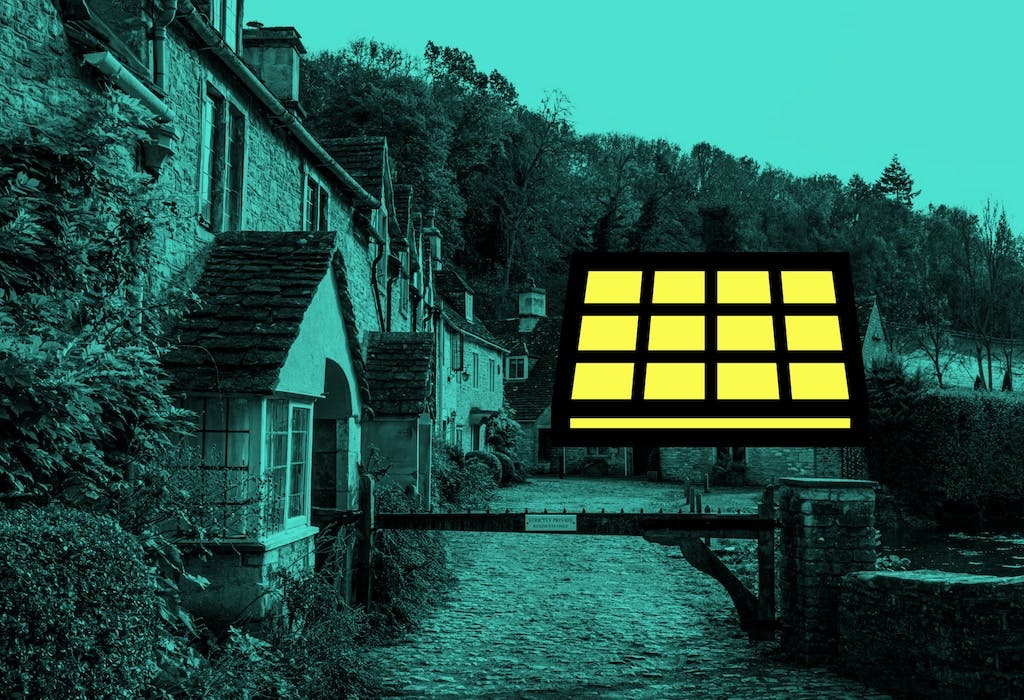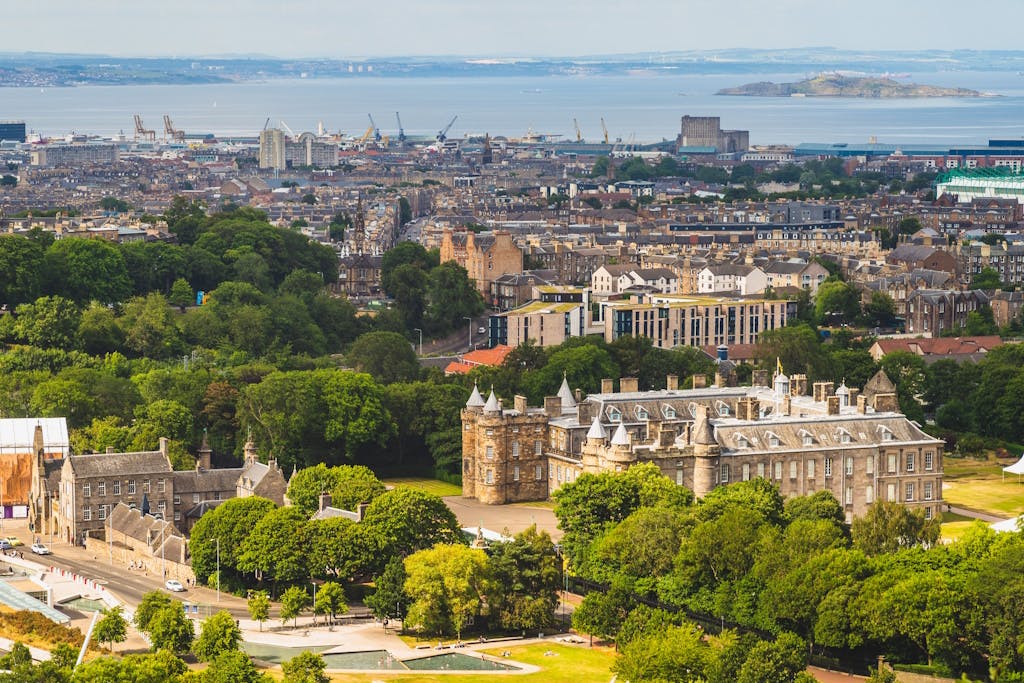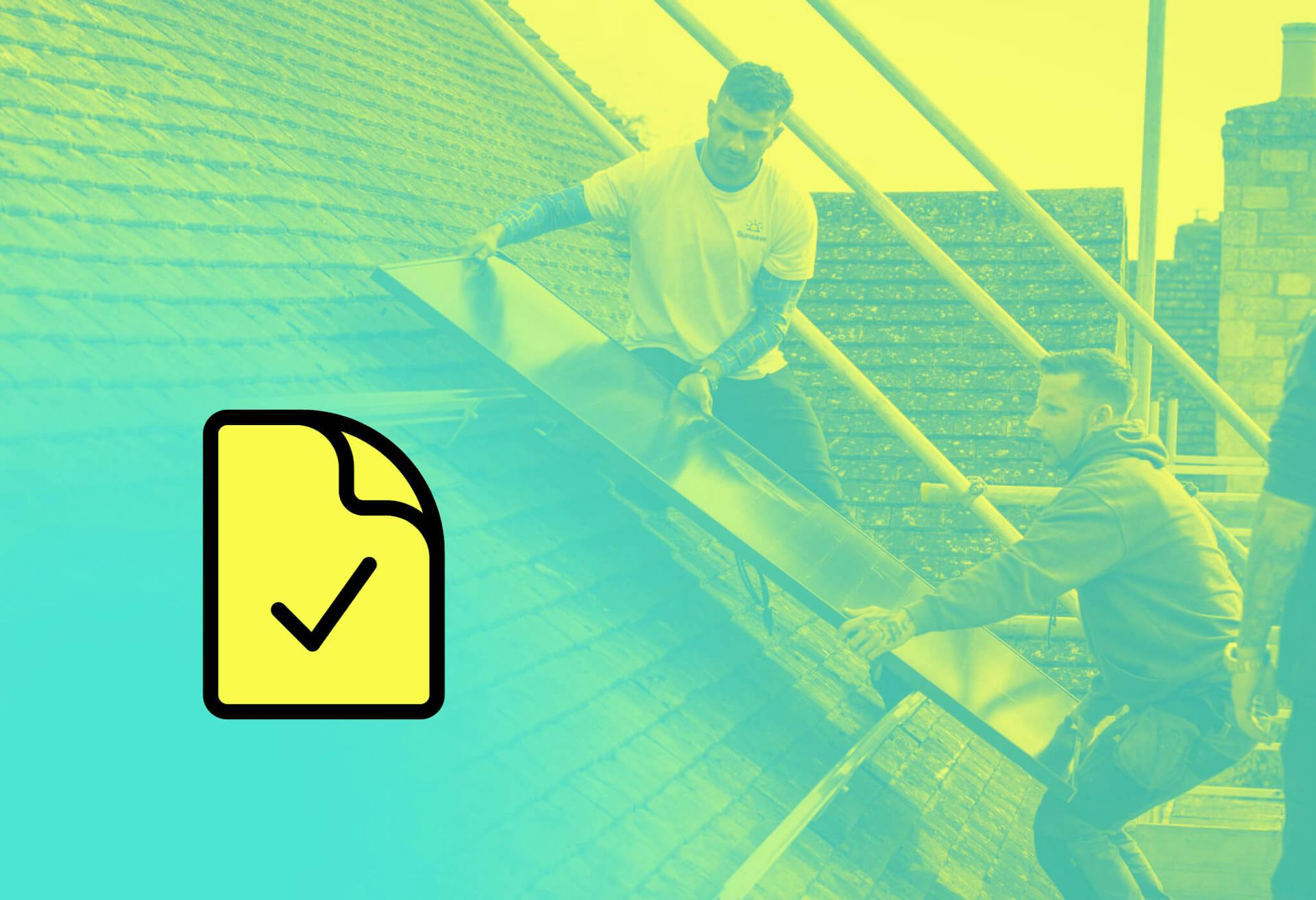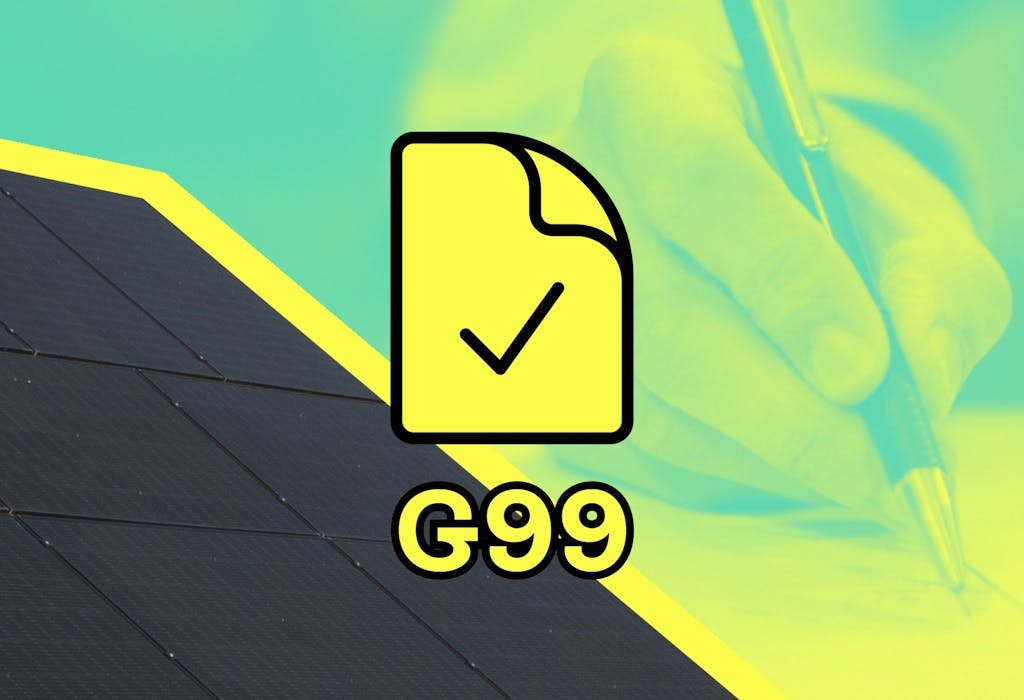- Solar advice hub
- Planning-permission
- Solar panels in conservation areas: the expert guide
Solar panels in conservation areas: the expert guide
Here are the obstacles you may encounter while getting solar panels in a conservation area, and how best to navigate them.


Why you can trust our content
We know that the solar industry is full of misinformation, but we only use reliable sources, including:
- Our experienced solar experts, installers and system designers
- Our own database of solar & battery system designs
- Authoritative bodies like MCS and the UK government




Calculate savings
What kind of home do you live in?
Calculate savings
What kind of home do you live in?
At a glance
Most households don’t need planning permission to get solar panels – but this isn’t always the case if you live in a conservation area.
Certain areas and buildings are subject to stricter regulations that require you to submit a planning application.
In this guide, we’ll explain what kind of obstacles you might encounter on your way to getting solar panels in a conservation area, how common they are, and how best to navigate them.
If you would like to see the savings you could get from a solar & battery system, answer a few quick questions below, and we’ll provide an estimate.
Find out how much you can save
What kind of home do you live in?
Can you install solar panels in a conservation area?
A conservation area is a legally protected place that’s preserved and enhanced by the local authority because it contains buildings or trees with a special architectural or historic meaning.
The idea is that nothing can be destroyed or altered without passing a series of checks to ensure it doesn’t detract from the place’s unique character. It’s a designation usually given by the local authority, or more rarely by the Secretary of State.
As of January 2025, there are more than 11,300 conservation areas in England. Together, they cover more than 2.2% of the country – though that figure is rising all the time.
You can install solar panels in a conservation area in most cases, thanks to permitted development rights, which empower homeowners to carry out reasonably sized measures without planning permission.
However, some conservation areas have an Article 4 Direction (A4D) applied to them. This planning regulation can limit or remove its residents’ permitted development rights, and may mean they have to get planning permission to go solar. More on this lower down.
Considering how much solar panels cost if you pay upfront, you don’t want to shell out for their installation if it’s difficult or even impossible to get the go-ahead from your local authority, so we’ll go into plenty of detail about when that is and isn’t the case.
To find out if you live in a conservation area, check your local council’s site. Most will have an interactive map or search tool where you can check if your home falls into the boundaries of a conservation area.
Solar panels in World Heritage Sites
There are 35 World Heritage Sites in the UK, ranging from buildings like the Jodrell Bank Observatory to entire areas, like the Old and New Towns of Edinburgh or the slate landscape of north-west Wales.
To become a World Heritage Site, a place must be nominated by its home country, then determined to have cultural and/or natural heritage by the United Nations Educational, Scientific, and Cultural Organisation (UNESCO).
These sites can be treated the same as conservation areas when it comes to solar installations. Some have permitted development rights, while others have an A4D applied, in which case you might have to ask for planning permission.
The authorities that oversee a World Heritage Site will look at every planning application through the lens of its impact on the site’s Outstanding Universal Value, which is a UNESCO term for its cultural and natural significance.
If the building in question doesn’t play a key role in maintaining the site’s cultural or natural significance, a planning application is unlikely to receive any pushback, according to Historic England.

What is an Article 4 Direction?
Local authorities have the power to reduce or remove permitted development rights from a certain site in their area, a particular group of sites, or indeed the entire area, as long as they have a justifiable reason to do so.
This ability is outlined in Article 4 of the legislation governing permitted development rights – which is why it’s called an Article 4 Direction (A4D).
Authorities usually apply A4Ds to preserve conservation areas, protect the local economy – for instance by blocking changes to a high street – and to stop family homes being turned into houseshares.
An A4D doesn’t forbid any alterations, but does require a site’s owner to gain planning permission before they proceed. This usually involves them explaining to the local authority how they’ll ensure their development doesn’t affect what makes the place special.
Every A4D is different, so even if your area is impacted by one, it may not mean you have to get planning permission to install solar panels.
Some conservation areas that currently have A4Ds applied to them include the Faversham Conservation Area in Kent and the Southwold Conservation Area in East Suffolk. In both cases, all the impacted properties are listed online.
If you live in a conservation area, you can check your local authority’s site to see if an A4D is in place, and whether it affects your ability to go solar. Households in England can use this UK government tool to see how A4Ds in their local authority affect them.
If your property is under an A4D, read through the justification for it online, then contact a planning expert at your local authority to discuss whether you can move forward with your solar project.
Households that aren’t sure whether their installation will comply with an A4D should consider applying to their Local Planning Authority (LPA) for pre-application advice.
It’s not a free service, but getting professional help at this stage could save you money and distress later on.
You could also apply for a Lawful Development Certificate (LDC), which confirms – for a fee – that you have the legal right to move ahead without planning permission. Check your local authority’s online Planning Portal to see how much you’d have to pay.
What are the planning restrictions for solar panels in conservation areas?
Most residential properties in conservation areas have no restrictions on their ability to install solar panels.
The only relevant prohibition is that you can’t put solar panels on a wall that faces a road – but that’s not typically where you’d want to put them anyway.
Your installation should fall under permitted development rights, meaning you can move ahead without getting planning permission – just make sure you and your installer follow the latest building regulations.
If you live in an area with an A4D in force, you may face restrictions or have to secure planning permission – though not always – and if your home is a listed building, you’ll usually need to attain listed building consent before proceeding.
You’re more likely to get listed building consent if your building is well-maintained, the panels don’t cause any structural damage or substantially alter the property’s appearance, the meter is hidden from view, and the installation is ultimately reversible.
In a situation where you need to get planning permission, take the time to understand the cultural or natural significance of the site that’s being protected, and take every precaution you can to avoid negatively impacting it.
How to get planning permission for solar panels in a conservation area
You’ll only need to get planning permission for solar panels in a conservation area if your property is included in a particularly restrictive A4D, or if you live in or near a listed building.
Every A4D is different, so do your research on the local requirements before you apply for planning permission to install solar panels.
You’ll usually have to fill in an application form with all the details of your project, containing illustrations of where the panels will be installed and what they'll look like, and an explanation of how they’ll fit in with their surroundings.
Once you’ve submitted all the necessary documents, your LPA is legally compelled to let the public know about your plans and open itself up to input from the community.
If this process doesn’t provoke any major backlash, you’ll be assigned a case officer who’ll investigate your project and recommend an outcome to the planning committee.
You can appeal a rejection, or you can submit a modified application – usually for no extra fee, if you do so within 12 months of the decision.
If you’re successful, you’ll be able to proceed, though often with some planning conditions. These can include a set time frame or specific materials that can and can’t be used.

The UK's first solar subscription
- No upfront cost
- Fixed monthly fee
- 20-year Sunsave Guarantee
Can neighbours object to your solar plans?
Most households can install solar panels under their permitted development rights, but if you do need to get planning permission, your neighbours will have an opportunity to object to your plans.
During the public consultation process of your application, anyone can raise concerns about how your solar panels might affect the neighbourhood appearance, their property, or even their light access.
The planning authority will take these objections into account when they decide on your application, but the objections must be based on valid planning concerns to carry any weight.
How to improve your chances of getting planning approval
You’ll only need to apply for planning permission if you live in or near a listed building, or in an area with a restrictive A4D – but if you do, there are a few helpful moves you can make.
To increase the chances of your solar panel installation being approved in a conservation area, we’d recommend:
- Working with experienced planning consultants who understand local regulations and can advise on the most appropriate design and positioning
- Choosing locations for the solar panels that are less visible, such as rear-facing roofs or areas not easily seen from the street
- Selecting solar panel styles that blend in with your roof or building’s design, such as solar tiles. Black solar panels tend to look much more appealing than blue
- Opting for smaller or fewer panels to minimise the visual impact in relation to the size of your roof or building
- Discussing your plans with neighbours and addressing their concerns before submitting your application
If you put some effort into laying the groundwork for your planning permission application, you'll increase your chances of getting your installation approved.
Next steps
If you live in a conservation area, you’ll probably be able to get solar panels installed without having to apply for planning permission.
Households that are impacted by an A4D are also often allowed to go solar without any additional steps – and even if you do need planning permission, it’s usually fully achievable.
There are generally very few restrictions that will stop you from installing solar panels on your roof – which means you’re almost certainly good to go.
If you're interested in learning how much a solar & battery system could save you on your energy bills, simply answer a few quick questions below, and we’ll provide an estimate.
Find out how much you can save
What kind of home do you live in?
Solar panels in conservation areas: FAQs
Related articles

Written byJosh Jackman
Josh has written about the rapid rise of home solar for the past six years. His data-driven work has been featured in United Nations and World Health Organisation documents, as well as publications including The Eco Experts, Financial Times, The Independent, The Telegraph, The Times, and The Sun. Josh has also been interviewed as a renewables expert on BBC One’s Rip-Off Britain, ITV1’s Tonight show, and BBC Radio 4 and 5.








